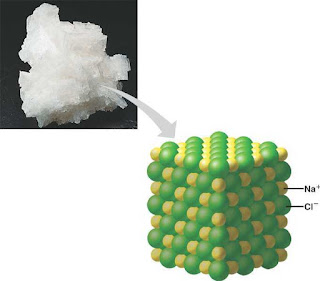Chemical Bonds
 |
| Source |
Biological Macromolecules
See if you can recorgnize these types of macromolecules by their structure (answers at the end of this little section.) |
| Add caption |
Source: http://biology.unm.edu/ccouncil/Biology_124/Summaries/Macromol.html
Answers:
1- A carbohydrate. Usually in rings like this (all corners of the ring represent a Carbon atom), with Oxygen and Hydrogen.
2- An amino acid/ protein. The dead giveaway is the Nitrogen in it. Carbs and lipids don't have Nitrogen in them.
3- A lipid/ triglyceride. The saturated hydrocarbon tails - 3 of them - are the clue here.
4- Protein (tertiary structure). It's all folder over on itself.
(Note: examples of nucleic acids and more examples of each kind immediately follow)
Proteins
 |
| Source: http://sph.bu.edu/otlt/MPH-Modules/PH/PH709_A_Cellular_World/PH709_A_Cellular_World6.html |
 |
| Source |
Lipids
 |
| Source |
 |
| Source |
Carbohydrates
Monosaccharides
 |
| Source |
Polysaccharides
Storage in animals: glycogen
Highly branched. Can contain 30,000 individual glucose units! (Click on source to see on a white background)
 |
| Source |
Storage in plants: Starch
 |
| Amylopectin - branched starch (Source) |
Cellulose
 |
| Source |
Nucleic Acids
 |
| Source |
 |
| Source |









No comments:
Post a Comment